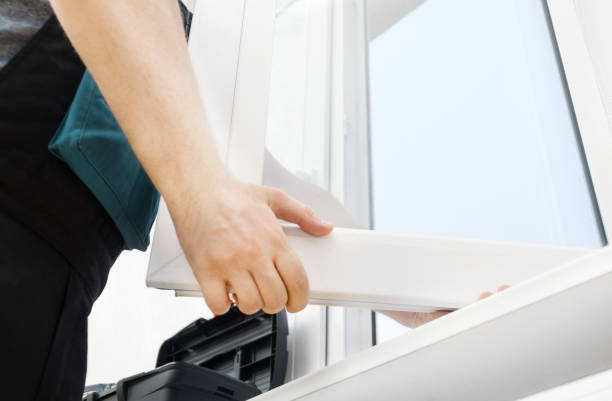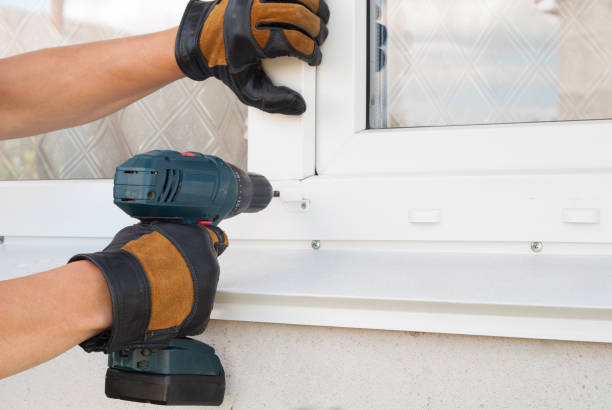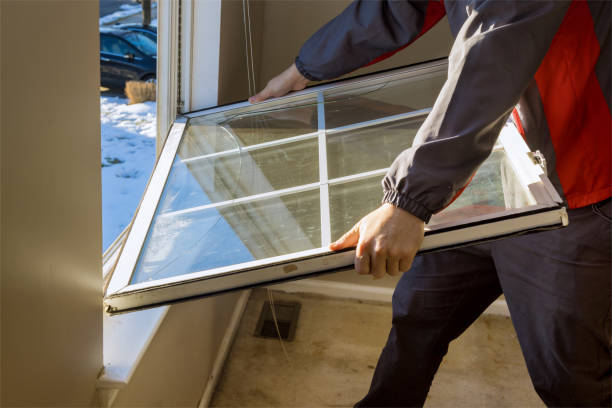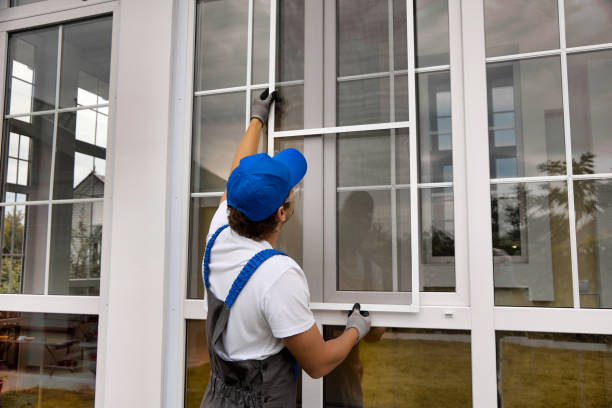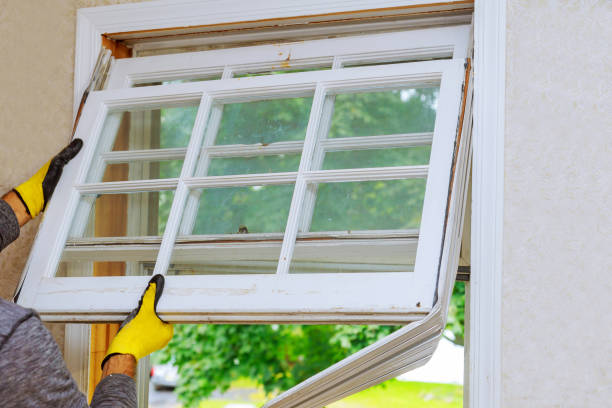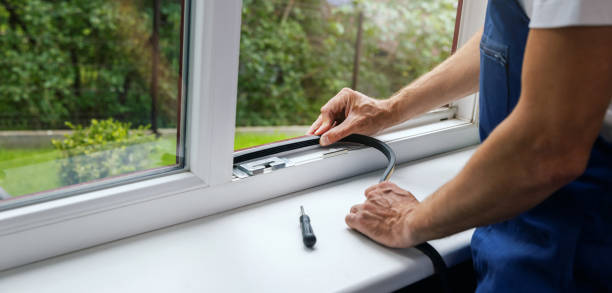Essential Tools and Materials for Window Installation Alexandria, VA Projects

When embarking on a window installation project, having the right tools and materials is crucial to ensure efficiency, precision, and safety. This guide outlines the essentials that every homeowner or professional installer should have before starting the process.
Essential Tools
- Measuring Tape: Accurate measurements determine window fitment. A durable measuring tape is indispensable.
- Utility Knife: Useful for cutting caulking, insulation, or any other materials during removal or installation.
- Pry Bar: Helps in removing old trim or frames without causing damage to the surrounding area.
- Caulking Gun: Ensures precise application of sealant around windows to prevent air and water leakage.
- Drill/Driver: Needed for securing screws into frames or wall studs. Power drills save time when compared to manual screwdrivers.
- Level: A level ensures that windows sit evenly during installation, preventing operational issues later on.
- Hammer and Nails: Necessary for securing wooden trims or making adjustments to framing if required.
- Putty Knife: Useful for applying filler materials like glazing putty around window frames or sills.
- Safety Gear: Goggles, gloves, and dust masks reduce risks associated with debris and sharp objects during installation.
Required Materials
| Material | Purpose |
| Replacement Windows | Should be selected based on size, energy efficiency rating, and style |
| Insulation Foam | Expanding foam fills gaps between the frame and wall opening |
| Caulk/Sealant | Provides a weatherproof barrier between the window frame and wall |
| Flashing Tape | Prevents water infiltration at vulnerable points like sills |
| Shims | Helps align windows perfectly during installation |
| Exterior Trim/Cladding | Provides aesthetic finishing while protecting edges against moisture |
Specialized Tools (Optional but Helpful)
- Oscillating Tool: Ideal for trimming small areas around openings where precision is key.
- Window Sucker Handles: Used to lift heavy glass windows safely without risking damage.
- Chalk Line Tool: Helpful in marking guidelines during framing adjustments or placement.
Tips for Organizing Tools and Materials
- Arrange all tools in a clean workspace before starting; this minimizes time spent searching mid-project.
- Double-check measurements and material quantities before purchasing supplies.
- Invest in quality over budget equipment—durable tools last longer and offer better performance.
Having these tools at hand ensures your window installation project progresses smoothly from start to finish while minimizing potential errors or issues along the way.
Ensuring the Perfect Fit: Measuring for Windows Alexandria, VA Homes
Accurate measurements are a critical first step in ensuring a proper window fit. Incorrect dimensions can lead to gaps, drafts, and additional costs due to improper installation or the need for adjustments. Below is a detailed guide on how to measure window dimensions accurately.
Essential Tools for Installing Replacement Windows Alexandria, VA
Before getting started, gather these essential tools:
– Measuring Tape: A sturdy, retractable tape measure is ideal for precise readings. – Notepad or Smartphone: To record measurements and avoid errors. – Level: To check if the existing frame is plumb and squared. – Pencil or Marker: For marking spots as needed during the process.
1. Measure the Width
- Top Width: Measure from one side jamb (vertical side of the frame) to the other at the top.
- Middle Width: Record a measurement across the middle section of the opening.
- Bottom Width: Take the measurement from side jamb to side jamb along the bottom edge.
- Use the smallest measurement of these three as your final width dimension. This ensures that your new window will fit even if there are slight irregularities in frame alignment.
2. Measure the Height
- Left Height: Measure from the head jamb (top horizontal piece) down to where you will install it at the sill.
- Center Height: Measure vertically in line with what would be roughly center-point area through appropriate sill depths endpoints . ✅
Step-by-Step Guide to Window Glass Replacement in Alexandria, VA
Installing a window involves a precise and methodical approach to ensure durability, energy efficiency, and aesthetic appeal. Below is a step-by-step guide to help you understand the professional process of window installation.
Step 1: Removing the Old Window
- Removing Trim and Stops
Use a pry bar or putty knife to gently remove any interior or exterior trim without breaking or splintering it. This step ensures easy reinstallation if needed. - Cutting Paint or Caulk Seals
Run a utility knife along any painted seals between the window frame and wall structure to loosen the bond. - Detaching the Existing Window
Unscrew or pry out nails securing the old window frame. Once free, remove it from its opening. Ensure no debris or remnants are left behind that could interfere with the new installation.
Step 2: Preparing the Opening
- Cleaning Any Debris
Clear out dirt, caulk residue, or shims from the opening. A clean surface allows for proper alignment of your new unit. - Checking for Rot or Damage
Inspect surrounding wood framing for signs of rot or damage caused by moisture infiltration. Repair any compromised areas before proceeding further. - Measuring For Accuracy
Confirm that measurements are accurate and match those of your replacement window. This reduces potential alignment issues during installation.
Step 3: Placing and Leveling the New Window Unit
- Apply Flashing Tape: Install self-adhering flashing tape along the sill area to prevent future water infiltration.
- Set in Place: Carefully position your new window within the opening, centering it so there is equal spacing on all sides.
- Level and Square: Use a level tool on both horizontal and vertical edges of your unit, ensuring even alignment before attachment.
- Secure Temporarily: Insert shims around key points like corners for temporary stability before permanently fastening screws.
Step 4: Securing The Window in Place
- Place screws through pre-drilled holes in mounting flanges.
- Avoid over-tightening fasteners as this could warp frames.
- Regularly check alignment throughout fastening steps.
Step 5: Insulating Around The Frame
- Fill gaps between framing material with low-expansion spray foam designed specifically for windows.
- Trim excess insulation foam once it has cured, taking care not to obstruct operation mechanisms like sash movement.
Step 6: Adding Finishing Touches
- Reinstall interior/exterior trim using finishing nails.
- Apply exterior-grade silicone caulking where necessary around edges.
- Paint touch-ups as needed if trim was damaged during earlier steps.
| Task | Tools Required | Time Estimate |
| Remove Old Window | Pry bar, utility knife | ~30 minutes |
| Prepare Opening | Brush/cleaner | ~20 minutes |
| Level & Secure New Unit | Level tool, drill | ~45 minutes |
| Insulate Gaps | Spray foam | ~15 minutes |
| Add Trim & Sealant | Nail gun, caulking gun | ~30 minutes |
By following these structured steps with attention to detail at every stage, professional installers ensure windows are functional, efficient, and visually appealing over time while minimizing potential complications post-installation.
Key Factors to Consider When Choosing Energy-Efficient Replacement Windows
When it comes to replacing windows, choosing energy-efficient options is a crucial decision that impacts your home’s energy usage, comfort, and long-term savings. With so many products available in the market, it’s essential to evaluate a few key factors before making your selection. Below are important considerations to guide your decision-making process.
Energy Performance Ratings
- U-Factor: Measures the rate of heat transfer. Lower values indicate better insulation performance.
- Solar Heat Gain Coefficient (SHGC): Indicates how well the window blocks heat from sunlight. A lower SHGC is ideal for warm climates, while higher values may be better for colder areas where solar heat can help reduce heating costs.
- Visible Transmittance (VT): Reflects the amount of natural light that passes through the window glass. Higher VT numbers allow more light but should strike a balance with energy performance.
Consider windows certified by organizations like ENERGY STAR®, as they meet stringent energy-efficiency standards tailored to specific climate zones.
Frame Materials
| Material | Pros | Cons |
| Vinyl | Affordable, low-maintenance, good insulator | Limited color options |
| Wood | Excellent insulator, classic aesthetic | Requires regular maintenance (painting/sealing) |
| Aluminum | Durable and lightweight | Poor insulation properties unless thermally improved |
| Fiberglass | Highly durable and efficient | Higher upfront cost |
Evaluate which material balances aesthetics, efficiency, and cost for your specific needs.
Glazing Options
- Double or Triple Pane Glass: Provides added insulation by incorporating air or gas-filled spaces between panes (e.g., argon or krypton gas).
- Low-E Coatings: Microscopically thin metallic layers that reflect heat while allowing natural light to pass through. They help maintain indoor temperatures throughout the year without reducing clarity or visibility.
- Tinted Glass: Reduces glare and provides UV protection while enhancing privacy.
Climate Considerations
- For regions with colder winters, prioritize low U-Factor ratings and multiple panes filled with insulating gas.
- In hot climates with intense sunlight exposure, opt for windows with low SHGC values and Low-E coatings designed to block excess heat.
Matching your window choice to your region’s climate ensures optimal performance year-round.
Durability & Warranty Coverage
Investing in durable replacement windows translates into fewer repairs or replacements over time. Opt for manufacturers offering robust warranties that cover defects such as seal failures or frame warping—this provides peace of mind about long-term reliability.
Selecting energy-efficient replacement windows is an essential step toward lowering utility bills and creating a more comfortable living space while reducing environmental impact over time. By carefully considering these factors—from performance ratings and materials to glazing innovations—you can make an informed decision tailored specifically to your home’s requirements.
Preparing Your Home Effectively for Seamless Window Replacement in Alexandria, VA
Proper preparation before starting a window installation project is essential for ensuring efficiency, safety, and success. By addressing key factors ahead of time, homeowners can minimize disruptions and ensure that installers have everything they need to complete the job effectively. Below are practical steps and considerations to prepare your home for a seamless window installation experience.
Clear the Area Around the Windows
To provide an unobstructed workspace for the installers, it’s crucial to clear the area both inside and outside of your home near the windows. This will help protect your belongings while ensuring easy access to each window.
- Remove curtains, blinds, or other window coverings.
- Take down decorations or wall hangings near windows.
- Move furniture at least three to four feet away from each window.
- Cover remaining furniture with protective sheets to prevent dust accumulation.
- Trim back shrubs, trees, or plants near windows.
- Remove outdoor furniture or decorations close to windows.
- Ensure pathways around your home are clear for installers’ equipment.
Protect Flooring and Surfaces
Window installation can generate dust and debris, which may affect floors or other surfaces in your home. Taking precautions can prevent damage and make cleanup easier after the project is complete.
- Lay down drop cloths or tarps in areas where installers will be working.
- Use adhesive carpet protection film in high-traffic zones.
- Cover hardwood floors with padded material to avoid scratches from tools or ladders.
| Surface Type | Recommended Protection Method |
| Carpet | Adhesive film or thick drop cloth |
| Hardwood Floors | Padded floor protector |
| Tile/Concrete | Standard tarps |
Secure Pets and Children
For safety reasons, pets and children should be kept away from work areas during installation. This ensures their well-being while allowing workers to focus on their tasks without distractions.
- Set up a temporary pet-safe area away from windows being replaced.
- Communicate with children about avoiding work zones during installation hours.
- If necessary, schedule childcare arrangements during the project timeframe.
Communicate With Installers
- Project Timeline: Confirm start times, estimated duration of work, and any potential delays.
- Entry Points: Determine which doors will be used by workers for entering/exiting your home.
- Special Requests: Notify installers about any specific concerns (e.g., fragile landscaping).
Verify Accessibility to Utilities
- Confirm electrical outlets near work areas are functional.
- Inform installers of circuit breaker locations if needed.
By following these preparation steps systematically, you’ll create an organized environment that facilitates smoother progress during window installations while protecting both your property and household members.
Proper Techniques for Leveling, Securing, and Insulating New Window Units
Ensuring that new window units are properly leveled, secured, and insulated is critical to achieving optimal performance and longevity. Poor installation can result in air leaks, water intrusion, and structural instability. Below is a guide on the proper techniques to follow for leveling, securing, and insulating your new windows.
Importance of Proper Leveling
Leveling ensures that windows function smoothly and last longer. Misaligned windows can cause issues such as difficulty operating the sashes or uneven wear on the frame.
Steps for Proper Leveling: 1. Use a Spirit Level: Place a high-quality spirit level along both the bottom and sides of the window frame to verify horizontal and vertical alignment. 2. Adjust Shim Placement: Insert shims as needed between the window unit and framing to correct any unevenness. 3. Double-Check Alignment: Before fully securing the window, recheck its alignment using your level to ensure no shifts occurred during adjustment.
Securing Your Window Units
Once properly leveled, it’s essential to secure the window in place to prevent movement caused by wind loads or temperature changes over time.
- Pre-Drill Holes: To avoid splitting the framing material or damaging the window unit, pre-drill holes where you plan to insert screws.
- Attach screws through pre-drilled holes in the designated mounting flanges of your window.
- For large windows with multiple panes or heavy frames, additional fasteners may be needed along both side jambs for added support.
- Avoid Over-Tightening: Over-tightening screws can warp the frame or create pressure points that compromise insulation integrity.
Effective Insulation Techniques
Proper insulation minimizes energy loss around your new windows while also reducing noise transmission from outside.
- Use low-expansion foam specifically designed for windows to fill gaps between frames and walls without distorting them.
- Opt for backer rods or weatherstripping materials if foam isn’t suitable for certain areas.
- Clean around all edges before applying foam or other fillers to ensure strong adhesion.
- Apply insulation gradually in layers rather than overfilling gaps at once—this helps prevent bulging or stress on surrounding materials.
- Use caulking (preferably silicone-based) around edges where frames meet drywall indoors or siding outdoors.
- Ensure all seals are smooth and uniform to block drafts effectively while maintaining aesthetic appeal.
Common Mistakes To Avoid
| Mistake | Impact |
| Using high-expansion foam | Can warp frames and affect proper fitment |
| Skipping shim adjustments | May lead to long-term misalignment issues |
| Overlooking moisture barriers | Increases risk of water intrusion leading to structural damage |
Take time during each step—leveling, securing, and insulating—to ensure a precise fit that maximizes durability while improving energy efficiency in your home’s overall envelope performance. A careful approach paves the way for years of trouble-free operation with minimal maintenance requirements.
- A Complete Guide to Replacement Windows Alexandria, VA: Types and Installation
- Essential Tools and Materials for Window Installation Alexandria, VA Projects
- Preparing Your Home for a Successful Window Replacement in Alexandria, VA
- 10 Important Factors to Consider Before Choosing Replacement Windows Alexandria, VA
- Finding the Best Replacement Windows Alexandria, VA Has to Offer for Your Home
- What to Expect During Your Professional Windows Alexandria, VA Installation Process
- Assessing Window Damage Before Installation in Alexandria, VA
- Understanding the Window Replacement Alexandria, VA Process and How to Prepare for It
- What to Know About Replacement Windows Alexandria, VA During a Professional Installation Process

